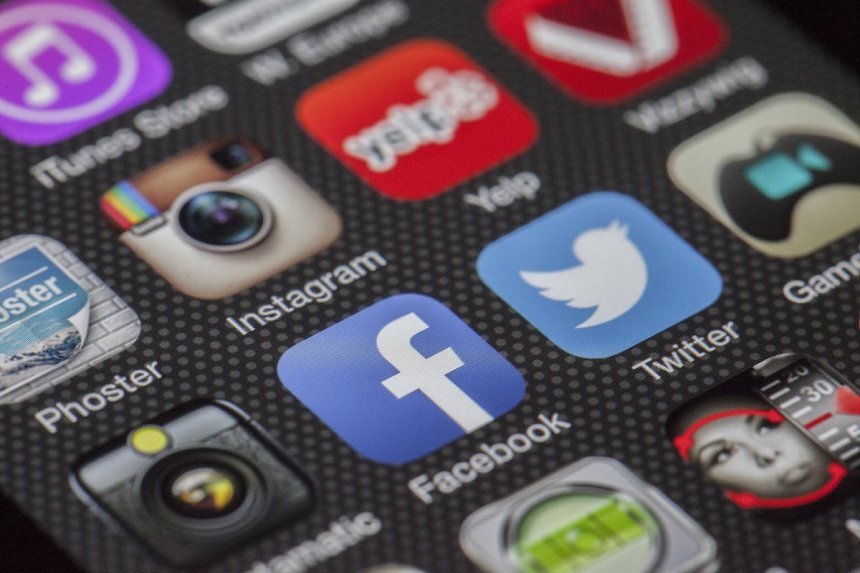How Social Media Is Fueling Global Protests in 2025
In this post, we’ll break down how social media—Facebook, X (formerly Twitter), TikTok, even WhatsApp—is not just helping people organize protests, but actively changing what gets protested, who joins the fight, and why it spreads like wildfire.

They say revolutions start with a whisper—but now they begin with a post.
One viral video. A hashtag storm. A live stream from a teenager's cracked iPhone. That’s all it takes for a local protest to explode onto the global stage.
This isn’t a theory. It’s the uncomfortable truth that world leaders, corporations, and even protestors themselves are scrambling to understand.
In this post, we’ll break down how social media—Facebook, X (formerly Twitter), TikTok, even WhatsApp—is not just helping people organize protests, but actively changing what gets protested, who joins the fight, and why it spreads like wildfire. We’ll also ask the big, messy question: Is this actually helping us… or quietly tearing us apart?
The Myth of “Peaceful” Platforms: Why Your Feed Isn’t as Neutral as You Think

Let’s be real—social media was never just about baby pictures and dance challenges. The idea that Facebook or TikTok is “just a tool” is dead wrong.
Social Media Algorithms Are Protest Accelerators
The catch is that social media sites aren't impartial. Their algorithms are made to present you with stuff that makes you feel something. That typically refers to feelings that motivate action, such as rage, fear, or anger.
- A heartbreaking video of police brutality?
- A thread exposing government corruption?
- A trending hashtag calling out injustice?
Algorithms push these to the top. Not because the platform cares about human rights, but because it makes money from your rage-scrolling.
From Hashtag to Headline in 24 Hours
It used to take weeks to organize a protest. Now? A trending hashtag can turn into a nationwide march before dinner.
Remember #EndSARS in Nigeria? What started as a tweet about police violence turned into one of the largest youth-led protests in the country’s history. Similar stories played out in Chile (#ChileDesperto), India (#FarmersProtest), and even Iran, where internet blackouts couldn’t stop the footage from leaking out. This isn’t coincidence. It’s a pattern.
Protest Is No Longer Local—It’s Globalized and Gamified
We’ve entered an era where even small-town protests can go viral across continents. And let’s be honest, it’s weirdly addictive.
Everyone’s Watching (Even If They’re Not Marching)
Not only Americans were outraged about George Floyd's murder in 2020. Protests broke out in Sydney, Nairobi, Berlin, and London. It wasn't a coincidence.
People saw it on Instagram Live. Shared it on TikTok. They felt connected, angry, ready to act—even if they lived thousands of miles away.
It’s like watching a movie trailer for injustice… and then stepping into the film yourself.
The “Influencer-Activist” Dilemma
Here’s where it gets messy. Activism has merged with clout-chasing. Some people genuinely care. Others just want views. Can you tell the difference?
- Do selfie protests help or hurt the cause?
- Should activism be aesthetic?
- And who decides who gets to speak?
This blur between activism and performance is a side-effect of protest going viral. A blessing and a curse.
Governments Are Terrified—So They’re Fighting Back Online
Authoritarian regimes aren’t dumb. They’ve realized that the real battlefield isn’t the street—it’s the screen.
Internet Shutdowns Are the New Rubber Bullets
You’d think cutting the internet would stop the protests. Sometimes it does. Sometimes it backfires.
In 2022, Kazakhstan’s government shut down mobile internet to stop protests from spreading. Instead, it fueled more anger. People assumed the worst and came out in larger numbers. The regime accidentally gave their opposition a shot of adrenaline.
The lesson? Silencing voices online can have the opposite effect.
Digital Surveillance Is Getting Smarter (and Scarier)
Here’s something no one likes to admit: your tweets can get you arrested. Protestors in Hong Kong used encrypted messaging apps like Signal to stay ahead of police. The Iranian government monitored VPN usage in order to prevent access to Twitter.
Social media helps protests grow, yes. But it also makes it easier to track and crush dissent—if you're not careful.
The Good, the Bad, and the Algorithmic Ugly
Afghan women have used social media to share their stories. It has provided a platform for Canada's Indigenous populations. It has revealed to the world, unvarnished by mainstream media, what conflict in Gaza or Ukraine actually looks like.
Without Instagram and TikTok, most of these stories would never leave the village or war zone they came from.
The Bad: Disinformation and Ragebait
Fake news spreads faster than facts. Deepfakes and AI-generated voices now make it harder to tell what’s real. And once a lie goes viral, good luck pulling it back.
Also—there’s protest fatigue. People scroll through one tragedy after another until it all blurs into apathy.
The Algorithmic Ugly: Rage as Revenue
Nobody enjoys saying this bit aloud. Conflict is profitable for social media. Clicks = money = outrage. Thus, if the world ever became tranquil again... Would these platforms be able to endure?
Think about it. Peace is boring. But protests? That’s the content jackpot.
Real Talk: Are We Better Off or Just More Distracted?
I’ve seen this play out up close. A local protest in my city was livestreamed by a student. That video went viral, got media coverage, and forced our mayor to make changes. Amazing, right?
But two weeks later? Another protest. Another livestream. New outrage. Same cycle.
It’s like we’re addicted to the protest high—but allergic to follow-through.
Share
What's Your Reaction?
 Like
0
Like
0
 Dislike
0
Dislike
0
 Love
0
Love
0
 Funny
0
Funny
0
 Angry
0
Angry
0
 Sad
0
Sad
0
 Wow
0
Wow
0











